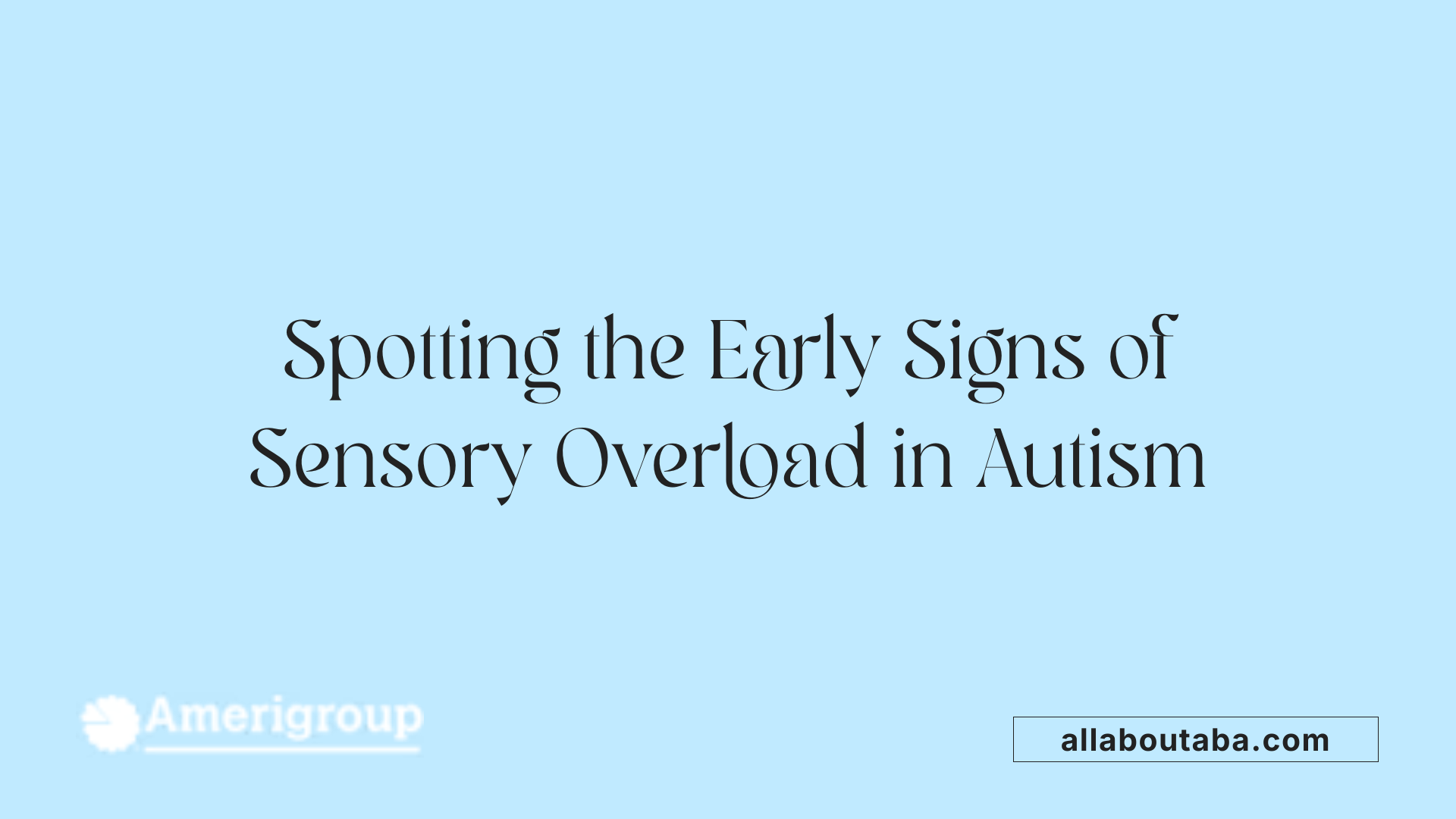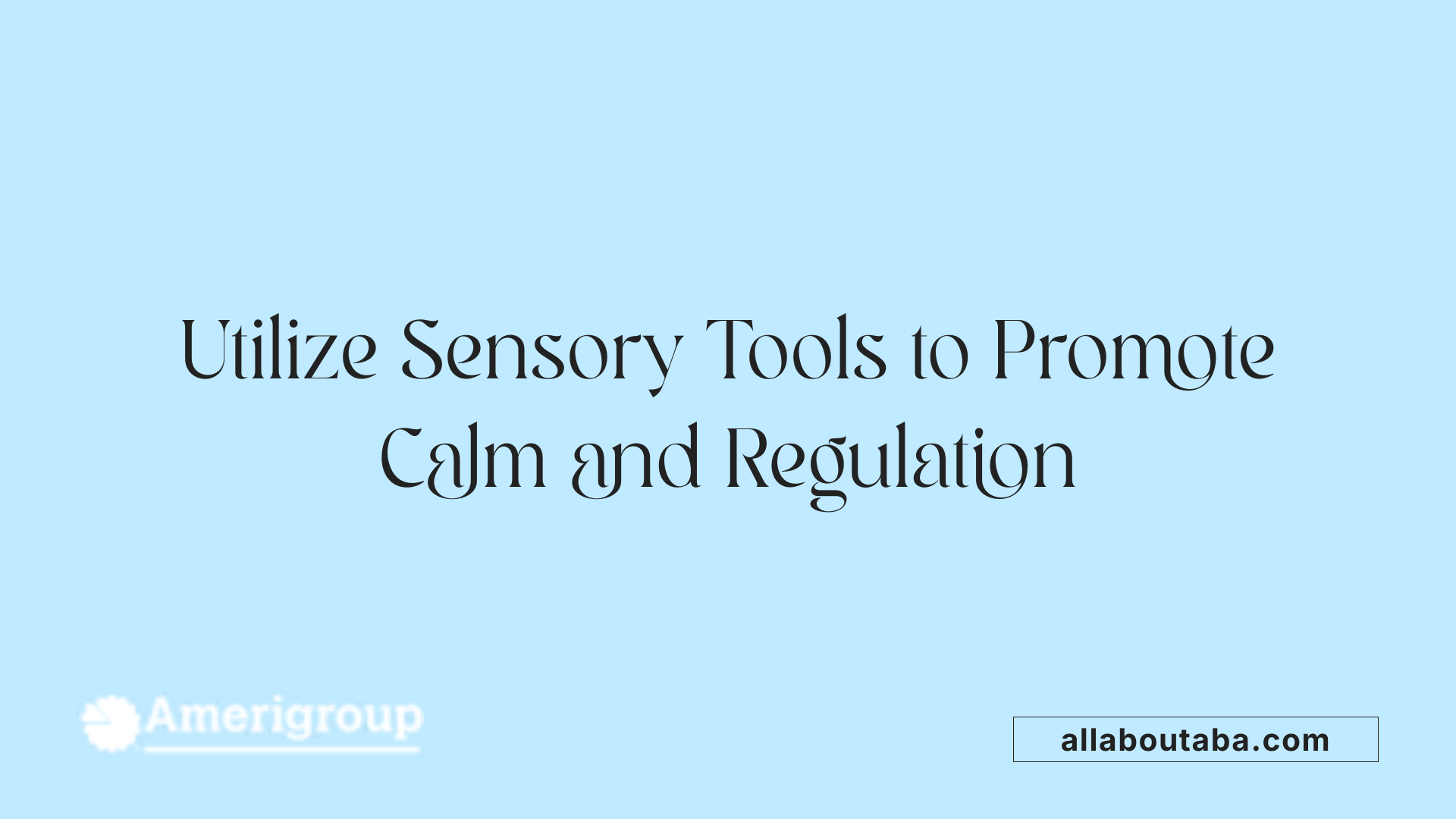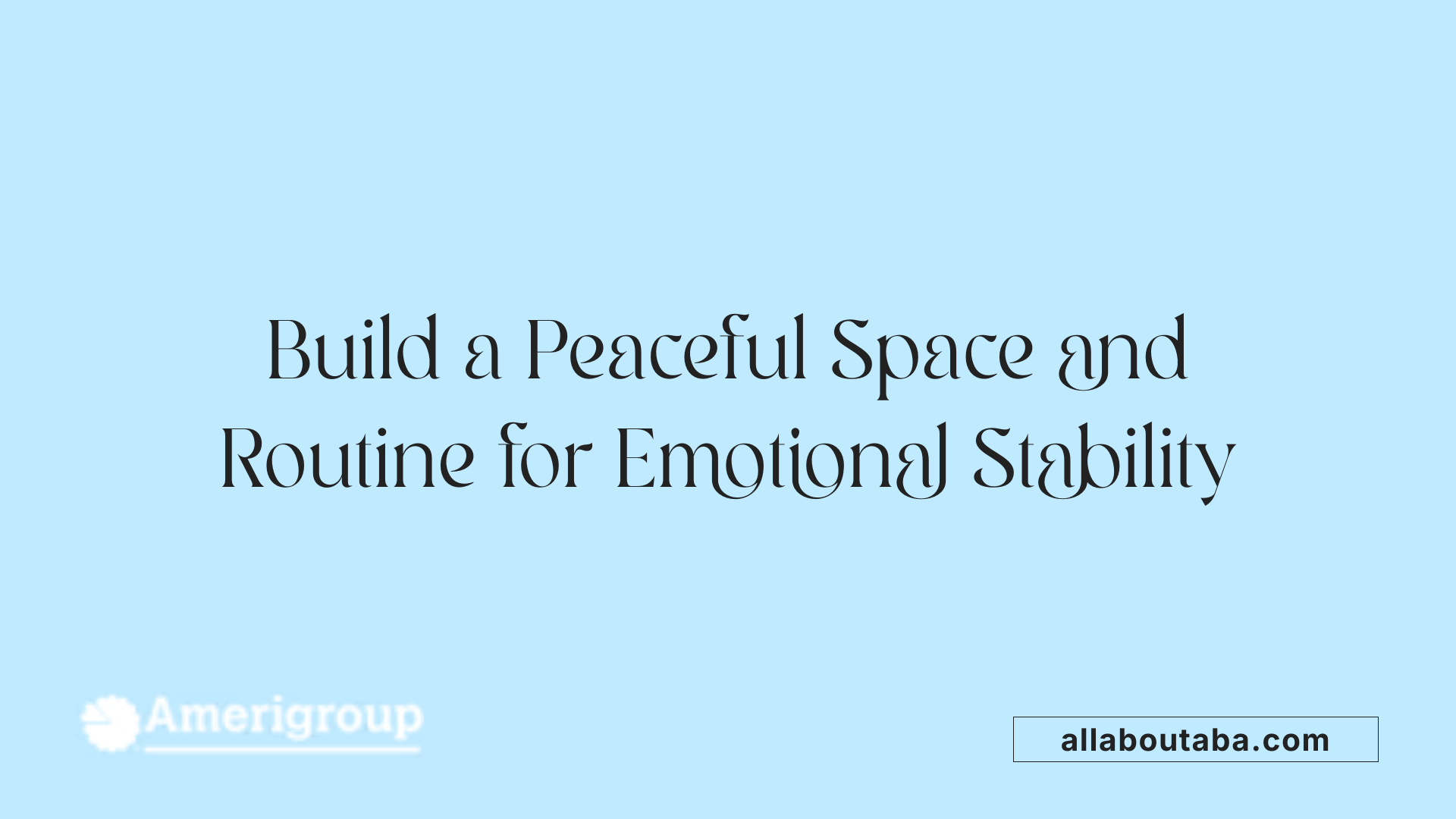Understanding and Implementing Calming Techniques for Autistic Children
Managing emotional regulation and sensory overload in children with autism can be challenging, but with knowledge and proper tools, caregivers and professionals can make a significant difference. This article explores a comprehensive range of calming strategies, recognizing the signs of stress, and practical tools to help autistic children achieve greater emotional stability and well-being.
Distinguishing Meltdowns from Tantrums and Recognizing Triggers

What are the differences between meltdowns and tantrums?
Meltdowns and tantrums are behaviors often observed in individuals with autism, but they differ significantly. Meltdowns are involuntary responses caused by nervous system overload and sensory processing issues. They result from the individual's sensory system perceiving stimuli as threats, leading to reactions like crying, screaming, or stimming that may last 20 minutes or more. In contrast, tantrums are deliberate behaviors driven by frustration or the desire to gain control, often involving defiance.
Are meltdowns involuntary behaviors or voluntary reactions?
Meltdowns are involuntary, automatic responses to overwhelming sensory input or emotional distress. They occur when the nervous system is unable to process stimuli effectively, leading to a loss of self-control. Recognizing this helps caregivers respond with understanding and patience, focusing on calming and supporting the individual.
How can I recognize the signs of sensory overload or stress?
Subtle signs indicating sensory overload include covering ears, seeking sensory input, increased stimming, withdrawal, and avoidance behaviors. During stress, individuals might also engage in repetitive motions or exhibit self-injurious behaviors. Being attentive to these signals allows for early intervention before a meltdown escalates.
What are common triggers like loud noises, bright lights, and certain textures?
Common triggers for sensory overload include loud noises, bright or flashing lights, strong smells, and uncomfortable textures. Bright environments or unfamiliar settings can also cause distress. Recognizing these triggers and minimizing exposure or preparing the individual with coping tools can significantly reduce the risk of a meltdown.
| Trigger Type | Examples | How It Affects | How to Manage |
|---|---|---|---|
| Auditory | Loud noises, sirens, crowds | Overwhelms hearing, causing distress | Use noise-canceling headphones, move to quieter spaces |
| Visual | Bright lights, flashing screens | Causes visual overload and anxiety | Use calming lighting, sunglasses, visual schedules |
| Tactile | Uncomfortable textures, tags | Sensory discomfort, leading to withdrawal | Provide sensory objects like fidget toys, soft clothing |
| Olfactory | Strong smells, perfumes | Overpowering odors trigger anxiety or nausea | Reduce exposure, use scent-free environments |
| Proprioceptive & Vestibular | Spinning, swinging, crashing | Overstimulation of balance systems | Offer calming activities like swinging or deep pressure techniques |
Being aware of these signs and triggers allows caregivers and autistic individuals to implement effective strategies proactively, fostering a calmer environment and reducing the likelihood of meltdowns.
Early Signs and Incidents of Sensory Overload

How can caregivers recognize signs of sensory overload and stress in individuals with autism?
Identifying early signs of sensory overload is essential for caregiving success. Common behavioral indicators include subtle actions like covering the ears to block out overwhelming noises, squinting or averting bright lights, withdrawal from social interactions, and repetitive movements such as rocking or hand-flapping.
Physical signs often accompany these behaviors. Caregivers might notice increased sweating, a rapid heartbeat, or rapid breathing, all signs that the person is experiencing heightened stress or discomfort.
Environmental factors can trigger overload. Loud environments, bright or flashing lights, strong, unpleasant smells, and certain textures or tastes can cause sensory distress. When these stimuli become overwhelming, they often lead to behaviors aimed at escaping or calming the sensory input.
Observation is critical. Recognizing these signs early helps caregivers implement calming interventions promptly — for instance, reducing environmental stimuli, offering noise-canceling headphones, or providing a quiet, cozy space.
Understanding each individual’s specific triggers and sensitivities is vital. Some children or adults may have unique reactions to certain sounds or textures. Being attentive allows for tailored support, making it easier to de-escalate and prevent full-blown meltdowns.
In sum, caregivers and loved ones can recognize early signs of overload by paying close attention to both behavioral and physical cues. This awareness paves the way for effective calming strategies, helping reduce the stress associated with sensory overload and supporting emotional well-being.
Effective Tools and Sensory Objects for Calmness
 Managing meltdowns and emotional upheaval in autism involves a variety of practical tools that help individuals regain control and feel secure. Weighted blankets and lap pads are popular options, providing gentle, firm pressure that promotes relaxation by mimicking a comforting hug. These items can help reduce anxiety and calm the nervous system during stressful moments.
Managing meltdowns and emotional upheaval in autism involves a variety of practical tools that help individuals regain control and feel secure. Weighted blankets and lap pads are popular options, providing gentle, firm pressure that promotes relaxation by mimicking a comforting hug. These items can help reduce anxiety and calm the nervous system during stressful moments.
Fidget toys and sensory bottles are also beneficial. Items like stress balls, Tangle toys, or sensory bottles filled with glitter, beads, or liquids serve as tactile and visual distractions, redirecting focus from overwhelming stimuli. Sensory bottles, in particular, offer a calming visual that can soothe overstimulated minds.
Noise-canceling headphones and calming visual aids are essential for reducing auditory and visual sensory inputs. Headphones block out loud noises that often trigger sensory overload, while visual tools such as calming lighting or visual schedules create a predictable environment that fosters safety and comfort.
In addition to tactile and auditory tools, calming scents and oral sensory options can be effective. Aromatherapy with calming scents like lavender may help soothe nerves, whereas chewable pendants or textured toys provide oral sensory input. These can act as outlets for sensory seeking behaviors or help ease anxiety.
Overall, these tools serve to create a sensory-friendly environment, whether at home, school, or in therapy, enabling better emotional regulation. Recognizing individual preferences and needs ensures that these tools are tailored to support each person’s unique sensory profile.
Practical Tips and Tools for Managing Autism-Related Emotional Challenges
- Keep a variety of sensory objects accessible, including weighted items, fidget toys, and visual aids.
- Establish calming routines using visual schedules and social stories.
- Create a designated quiet space equipped with sensory tools for safe retreat.
- Use sensory objects proactively to prevent overload.
- Incorporate deep pressure and oral sensory options when signs of distress appear.
- Educate caregivers and peers on recognizing signs of overstimulation.
- Practice calming techniques like deep breathing, yoga, and grounding exercises regularly.
- Customize tools based on age, preferences, and sensory needs for effective self-regulation.
By integrating these strategies and tools, caregivers can help individuals with autism navigate overwhelming situations more smoothly, reducing the frequency and intensity of meltdowns and fostering emotional resilience.
Creating a Calming Environment and Routine
 Establishing a peaceful setting is essential for helping children with autism manage sensory overload and reduce the likelihood of meltdowns. Caregivers can designate specific areas, such as calm-down corners or sensory zones, furnished with tools like weighted blankets, fidget toys, and soothing lighting. These spaces offer a safe retreat where individuals can regain composure.
Establishing a peaceful setting is essential for helping children with autism manage sensory overload and reduce the likelihood of meltdowns. Caregivers can designate specific areas, such as calm-down corners or sensory zones, furnished with tools like weighted blankets, fidget toys, and soothing lighting. These spaces offer a safe retreat where individuals can regain composure.
Supporting this are structured routines, reinforced by visual schedules that clearly outline daily activities. Consistency and predictability help children feel secure, reducing stress around transitions or unexpected changes. Visual cues—like picture cards or timers—prepare children for upcoming activities, making transitions smoother.
Predictable routines and quiet zones work together to create an environment conducive to emotional regulation. When children know what to expect and have a dedicated space to relax, they are better equipped to handle sensory challenges.
How can caregivers implement sensory processing strategies to promote calmness? Incorporating sensory strategies involves creating an environment with controlled stimuli—dimming lights or reducing noise—to prevent overload. Regular sensory activities like gentle swinging or proprioceptive input help children regulate their sensory systems. Providing tools such as stress balls, textured fabrics, or weighted items offers opportunities for sensory input that can be calming.
It’s also important to allow children to self-regulate by accessing quiet spaces when needed. Calming techniques like deep-pressure therapy through weighted blankets, calming scents, or oral sensory tools like chewy necklaces can further soothe sensitivities. Customizing these tools based on individual preferences and sensitivities enhances their effectiveness.
In summary, a thoughtfully designed sensory-friendly setting combined with structured, visual-supported routines and personalized strategies fosters an environment where children with autism can better manage sensory overload, promoting emotional stability and comfort.
Supporting Emotional Development and Self-Regulation Skills
How can children learn to recognize and communicate their feelings?
Teaching children to recognize and express their emotions is a vital part of supporting their emotional development. Using visual tools like mood thermometers or feeling charts can help children identify and label their emotions accurately. Social stories are also effective, as they provide simple narratives that explain social situations and appropriate responses, reducing anxiety and confusion.
What are some calming techniques suitable for children with autism?
Practicing calming strategies such as deep breathing exercises, progressive muscle relaxation, and mindfulness can significantly improve self-regulation. Techniques like blowing up a balloon or visual aids that demonstrate breathing patterns help children learn to calm themselves during stressful moments.
How can activities like drawing or sensory play assist in self-calming?
Engaging in activities such as drawing fears, coloring, or sensory play allows children to express feelings and reduce internal stress. Sensory tools like fidget toys, weighted blankets, or sensory bottles help redirect focus and soothe overstimulation.
| Technique | Description | Benefits |
|---|---|---|
| Visual mood indicators | Use of charts or thermometers to show emotional states | Improves emotional awareness and communication |
| Deep breathing exercises | Slow, controlled breaths to calm the nervous system | Reduces anxiety and emotional intensity |
| Sensory activities | Drawing, coloring, sensory bottles, or fidget toys | Provides distraction and sensory regulation |
| Routine routines and visual schedules | Predictable daily activities supporting stability | Builds security and reduces stress |
How to practice and incorporate these calming strategies?
Introducing these strategies during calm moments can help children internalize techniques for later use. Role-playing and practicing together, using visual aids, and creating a calming routine help children become familiar with the tools and know when and how to use them.
What professional approaches support emotional growth?
In addition to daily routines and tools, therapies such as cognitive-behavioral therapy (CBT) adapted for autism can assist children in understanding their emotions and developing coping mechanisms. Support from therapists, caregivers, and educators ensures consistency and reinforcement of these skills.
How do environmental adjustments assist in emotional regulation?
Creating a sensory-friendly environment is essential. Quiet spaces, sensory rooms, and appropriate tools like noise-cancelling headphones or calming lighting help reduce overstimulation. Consistent routines supplemented with visual supports foster a sense of predictability and security.
| Tools & Strategies | Purpose | Implementation Examples |
|---|---|---|
| Mood thermometers, social stories | Emotional recognition and communication | Daily check-ins, storytelling sessions |
| Deep breathing, grounding exercises | Calming and self-soothing | Breathing exercises during stressful moments |
| Sensory tools, visual cues | Reduce overload and anxiety | Use of weighted blankets, sensory bottles, visual schedules |
| Structured routines | Promote security and reduce surprises | Visual schedules and consistent daily activities |
By integrating these methods into daily life, children with autism can improve their ability to recognize, communicate, and manage their feelings, fostering greater independence and emotional resilience.
Educational Resources and Practice for Calming Techniques
There are a variety of educational resources available for individuals and caregivers seeking to learn effective calming techniques tailored for autism. These resources include downloadable PDFs, online webinars, and comprehensive training programs designed to deepen understanding of sensory processing issues and emotional regulation.
Many of these tools focus on body-based regulation methods, such as encouraging activities like stimming, jumping, or swinging, which help release excess energy and reduce stress. Sensory activities like using weighted blankets, plush toys, sensory bottles, and noise-canceling headphones are also emphasized for their calming benefits.
Visual supports play a crucial role in teaching calmness. Social stories, visual schedules, and calming strategies boards help children understand and practice self-regulation techniques in a clear, supported way. These materials often incorporate images and simple instructions to teach children how to recognize their feelings and employ strategies like deep breathing, progressive muscle relaxation, or mindfulness exercises.
Together, these resources assist caregivers and educators in creating supportive environments that promote emotional well-being. They enable consistent practice of calming techniques, encouraging children to develop self-awareness and resilience in managing their sensory and emotional challenges.
The Role of Caregiver and Professional Support in Calming
Why Is a Calm Adult Presence Important During Meltdowns?
During a meltdown, individuals with autism often experience involuntary, overwhelming reactions caused by sensory overload. A calm and consistent caregiver can serve as a grounding presence, helping to create a sense of safety. Remaining calm prevents escalation, models self-regulation, and reassures the individual that they are in a safe environment.
How Can Caregivers Use Empathetic Communication?
Empathetic communication involves speaking softly, using reassuring words, and showing patience. Validating the child's feelings—acknowledging their distress without judgment—helps them feel understood. Simple, clear language and positive reinforcement support emotional regulation and foster trust.
Encouraging Self-Calming and Personal Space
Supporting children to find their own calming strategies is vital. Providing access to a designated quiet space or sensory calming corner allows them to self-regulate when overwhelmed. Encouraging practices like deep-breathing, gentle rocking, or using sensory tools fosters independence in managing emotions.
Collaborating with Therapists and Educators
Working together with therapists, teachers, and other professionals ensures consistency in calming approaches. Sharing observations about sensory triggers and effective interventions helps develop personalized strategies that meet the child's unique needs. Regular communication facilitates adjustments and the use of best practices across environments.
How Can Caregivers Incorporate Sensory Strategies to Promote Calmness?
Caregivers can implement sensory processing tactics by creating a predictable, soothing environment with minimized loud noises and bright lights. Including sensory activities such as swinging, squeezing stress balls, or using weighted blankets can help satisfy sensory needs. Access to calming tools like fidget toys, noise-canceling headphones, or sensory bottles supports regulation.
Having a designated quiet space offers an escape during overload, allowing the child to decompress safely. Tailoring sensory inputs—such as offering sensory-friendly foods, using calming scents, or providing textured objects—can also soothe sensitivities. Overall, personalized sensory strategies foster resilience and help children remain engaged and calm.
Enhancing Calmness Through Knowledge and Consistency
Building a supportive environment with consistent routines, sensory accommodations, and empathetic communication is essential in helping children with autism manage their emotions effectively. By recognizing early signs of stress, using a variety of sensory tools and techniques, and fostering open collaboration among caregivers, educators, and professionals, we can create a more calming and responsive atmosphere that promotes emotional resilience and well-being for autistic children.
References
- Meltdowns & Calming Techniques in Autism
- 7 Calming Strategies for Autism Every Parent or Guardian Should ...
- 10 Calming Strategies for Autism: Reduce Anxiety and Meltdowns
- Calming Strategies - Sesame Workshop
- 7 Calming Strategies for Autism - Experia USA
- 10 Tips on How to Calm an Autistic Child - Autism Parenting Magazine
- Calming Strategies to Support an Autistic Person - Autism Awareness
- Calming Strategies for Kids: Techniques to Teach to Children
- Sensory issues - Autism Speaks
- Sensory differences - a guide for all audiences







